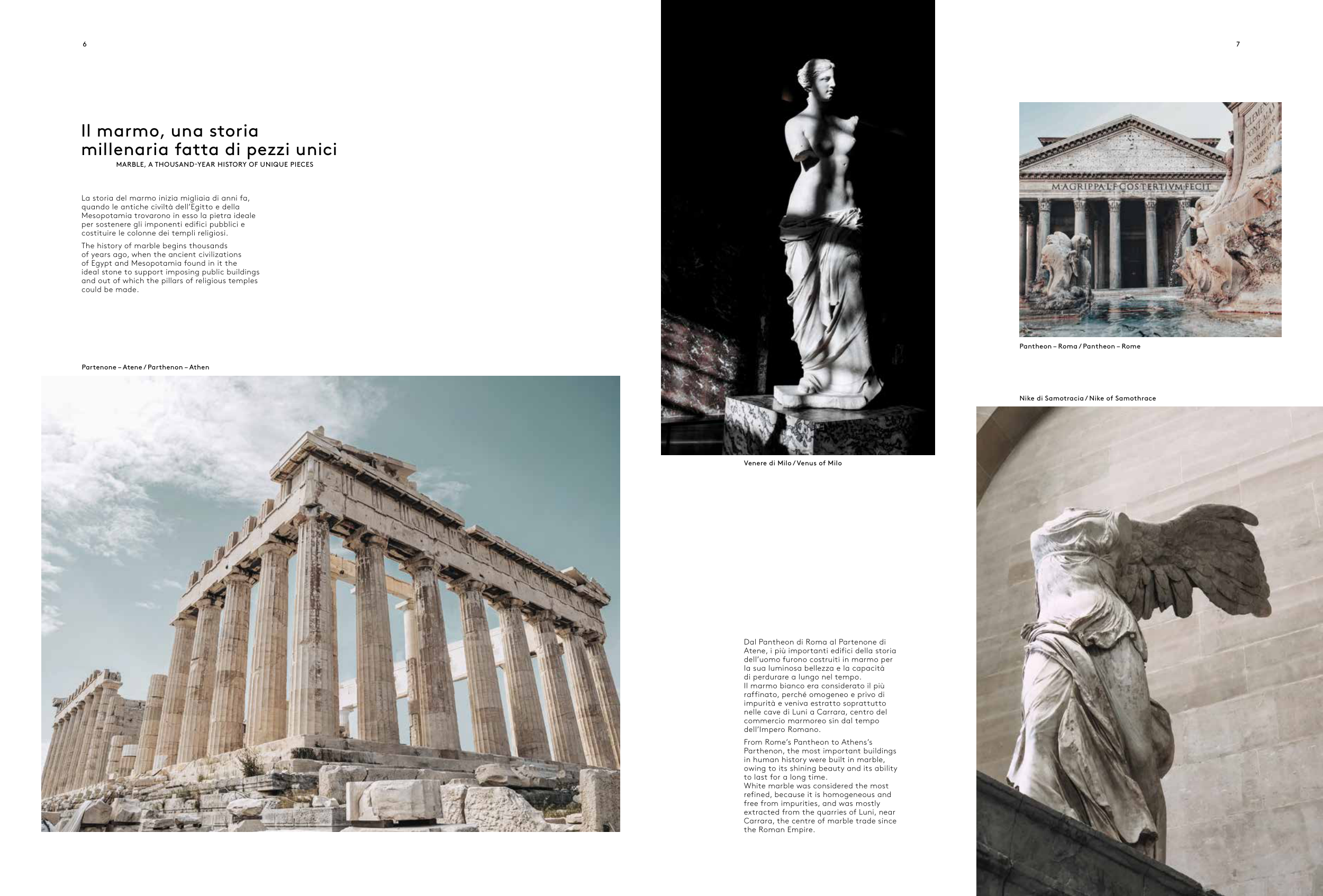Venere di Milo / Venus of Milo
Nike di Samotracia / Nike of Samothrace
Pantheon – Roma / Pantheon – Rome
Partenone – Atene / Parthenon – Athen
Dal Pantheon di Roma al Partenone di
Atene, i più importanti edifici della storia
dell’uomo furono costruiti in marmo per
la sua luminosa bellezza e la capacità
di perdurare a lungo nel tempo.
Il marmo bianco era considerato il più
raffinato, perché omogeneo e privo di
impurità e veniva estratto soprattutto
nelle cave di Luni a Carrara, centro del
commercio marmoreo sin dal tempo
dell’Impero Romano.
From Rome’s Pantheon to Athens’s
Parthenon, the most important buildings
in human history were built in marble,
owing to its shining beauty and its ability
to last for a long time.
White marble was considered the most
refined, because it is homogeneous and
free from impurities, and was mostly
extracted from the quarries of Luni, near
Carrara, the centre of marble trade since
the Roman Empire.
Il marmo, una storia
millenaria fatta di pezzi unici
MARBLE, A THOUSAND-YEAR HISTORY OF UNIQUE PIECES
La storia del marmo inizia migliaia di anni fa,
quando le antiche civiltà dell’Egitto e della
Mesopotamia trovarono in esso la pietra ideale
per sostenere gli imponenti edifici pubblici e
costituire le colonne dei templi religiosi.
The history of marble begins thousands
of years ago, when the ancient civilizations
of Egypt and Mesopotamia found in it the
ideal stone to support imposing public buildings
and out of which the pillars of religious temples
could be made.
6
7


